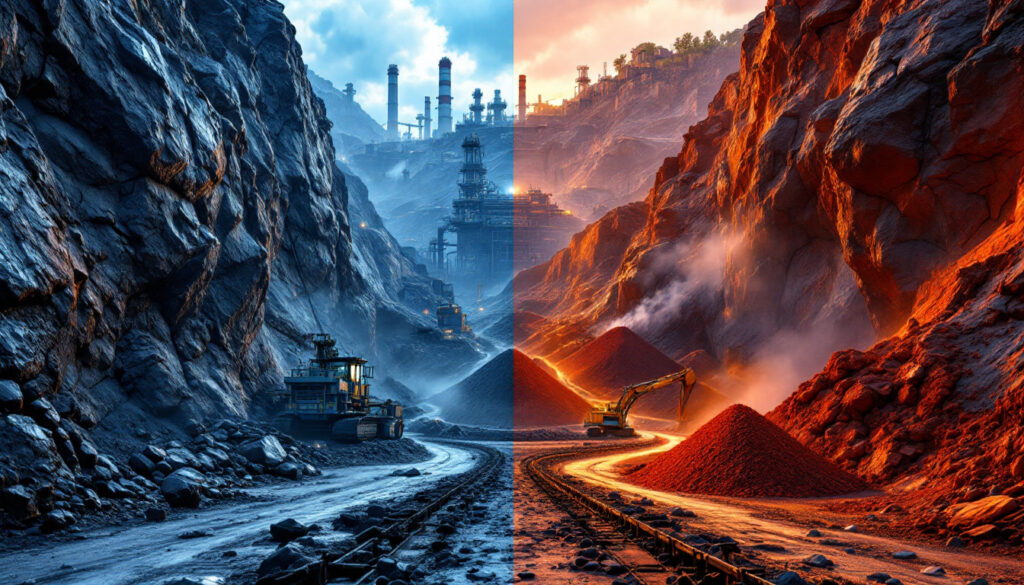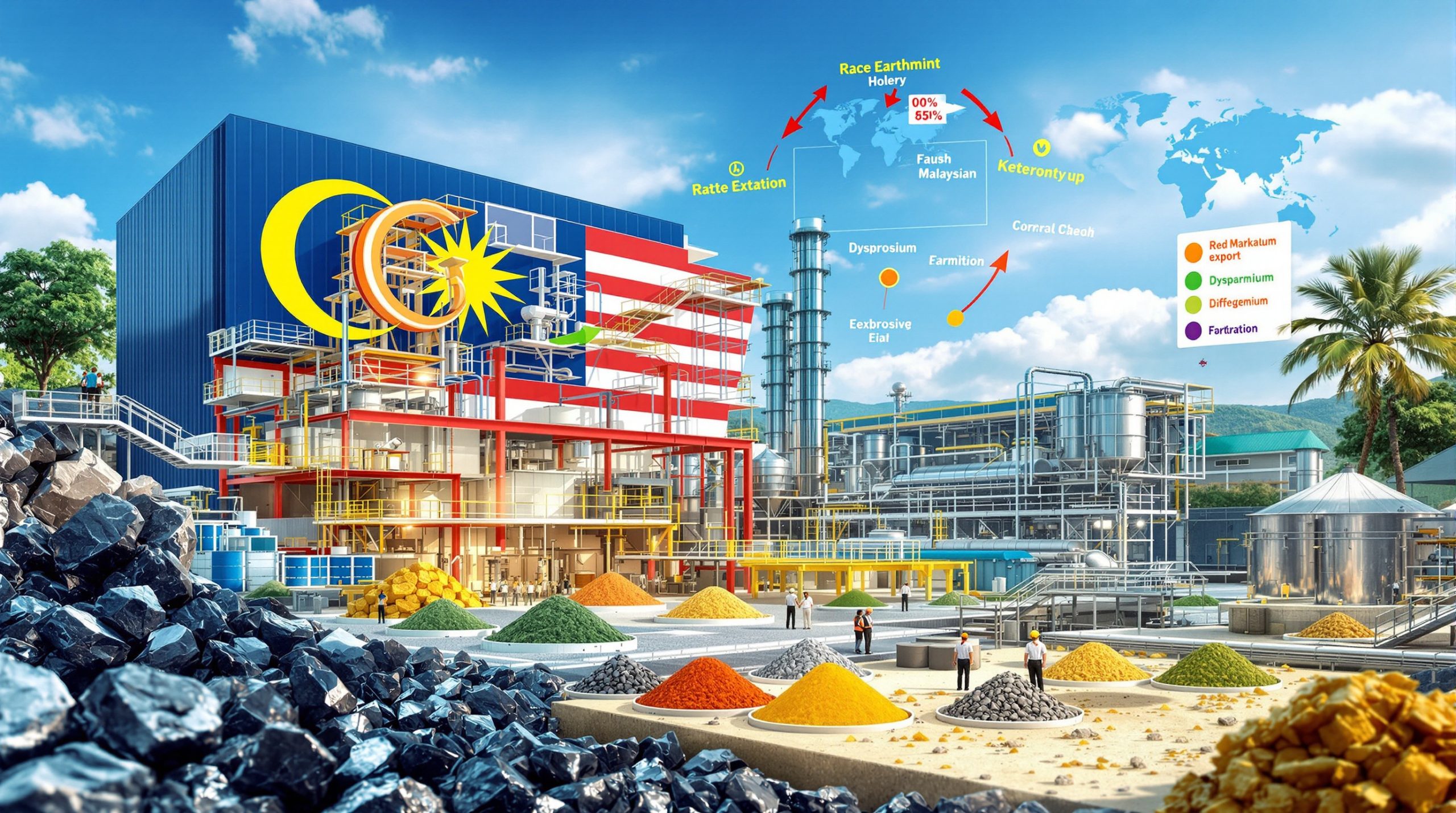India's Strategic Push for Overseas Raw Material Assets
India is actively pursuing a comprehensive strategy to secure overseas iron ore, coking coal, and other critical raw materials to support its ambitious steel industry expansion goals. With plans to increase steelmaking capacity by 50% to 300 million tons by 2030, the country faces mounting pressure to address its reliance on imported coking coal (85% of current needs) and diversify supply chains amid geopolitical risk strategies and logistical challenges.
The government is urging firms to acquire overseas iron ore and coking coal assets as part of a long-term vision to ensure resource security and industrial autonomy. This strategic initiative comes as India positions itself as a global manufacturing hub, with steel production at the core of its economic transformation.
Why India is Acquiring Foreign Iron Ore and Coking Coal Assets
India's push to acquire overseas mining assets stems from its goal to achieve resource security for its steel sector, which is central to its industrial and infrastructure development plans. The government has explicitly prioritized raw material securitization, with Steel Secretary Sandeep Poundrik stating, "Raw material securitization is the most important aspect of steelmaking."
This urgency is driven by the need to mitigate supply chain vulnerabilities and support a projected 50% increase in steel production capacity by 2030. As domestic resources prove insufficient to meet growing demand, international acquisitions have become imperative for sustainable growth.
India's Steel Industry Expansion Goals
India's current steelmaking capacity stands at approximately 200 million tons, with plans to reach 300 million tons by 2030. This ambitious expansion is aligned with the country's infrastructure development targets and manufacturing initiatives.
The steel sector's growth trajectory necessitates substantial increases in iron ore, coking coal, limestone, and dolomite supplies. Coking coal imports alone are projected to surge from 58 million tons to 160 million tons annually by 2030, highlighting the scale of the challenge.
The domestic shortfall in high-quality coking coal—a key input for blast furnace-based steel production—has made international acquisitions a strategic imperative. Without secured overseas assets, India's steel expansion goals could face significant constraints and cost pressures.
The Critical Importance of Resource Security
India's reliance on imported coking coal (85% of total demand) creates significant economic and logistical risks. Australia currently supplies over 50% of these imports, but recent volatility in global commodity trends and geopolitical tensions have underscored the need for diversification.
State-run miner NMDC is exploring coking coal assets in Indonesia and Australia, reflecting a shift toward direct ownership over reliance on trade agreements. This approach aims to insulate India from price fluctuations and supply disruptions, particularly as competing nations like China intensify their global resource investments.
Industry analysts note that resource ownership provides multiple advantages beyond mere supply security, including pricing leverage, quality control, and strategic autonomy in international markets. For India's steel manufacturers, these factors translate to more stable cost structures and improved competitiveness.
India's Dependence on Imported Coking Coal
Current Coking Coal Import Dynamics
India imported approximately 58 million tons of coking coal in the 2024–2025 fiscal year, marking a 0.7% decline from the previous year due to reduced shipments from Australia and the United States. Despite this slight dip, long-term demand remains unsustainable without new supply channels.
Australia's dominance as a supplier (over 50% of imports) exposes India to regional geopolitical risks, while U.S. exports have declined due to shifting trade priorities. This concentration risk has prompted government and industry stakeholders to accelerate diversification efforts.
The quality of coking coal—measured by factors such as ash content, volatile matter, and caking properties—varies significantly across sources, requiring careful matching to specific steel production processes. India's steel mills typically require premium hard coking coal with low ash content, which remains in limited global supply.
Supply Diversification Initiatives
To reduce dependency on traditional suppliers, India is pursuing partnerships in Mongolia and Indonesia. However, Mongolia's landlocked geography complicates logistics, requiring cross-border infrastructure agreements with China or Russia for viable transportation routes.
NMDC's exploration of Indonesian coking coal assets highlights a strategic pivot toward Southeast Asia, where mining infrastructure and political stability align with India's resource security objectives. These efforts are complemented by government incentives for private-sector participation in overseas acquisitions, emphasizing joint ventures and long-term offtake agreements.
The diversification strategy also includes technological adaptations, such as pulverized coal injection (PCI) and increased scrap-based steelmaking, which can reduce dependence on prime coking coal. However, these alternatives cannot fully substitute for metallurgical coal in integrated steelmaking operations.
Broader Raw Material Targets and Acquisition Strategies
Strategic Materials Beyond Coking Coal
While coking coal remains the immediate priority, India's resource strategy encompasses iron ore, limestone, and dolomite. Iron ore reserves are domestically abundant, but high-grade deposits are limited, necessitating supplementary imports for premium steel production.
Limestone and dolomite—critical flux materials in steelmaking—are also being targeted through international partnerships to ensure consistent quality and volume. These minerals play essential roles in removing impurities during the steelmaking process and adjusting the chemical composition of molten metal.
The government is urging firms to acquire overseas iron ore assets, particularly those with high iron content (above 62% Fe) and low impurities, which can enhance blast furnace efficiency and reduce environmental impacts. Acquisitions in Australia and Brazil are being prioritized due to their established mining infrastructure and high-grade deposits.
Geopolitical and Logistical Considerations
India's acquisition strategy prioritizes politically stable regions with established mining feasibility insights and infrastructure, such as Australia and Indonesia, to minimize operational risks. This contrasts with China's broader "resource diplomacy" approach, which often involves high-risk investments in conflict-prone regions.
By focusing on commercial viability and infrastructure accessibility, India aims to achieve a balance between cost efficiency and supply reliability. Maritime security has also emerged as a key consideration, with naval deployment strategies increasingly aligned with resource transportation routes.
The government is encouraging firms to acquire overseas iron ore and coking coal assets through diplomatic channels, providing intelligence on potential acquisition targets and facilitating government-to-government negotiations where appropriate. This coordinated approach aims to strengthen India's position in competitive bidding processes.
Challenges in Resource Acquisition
Logistical and Market Barriers
Mongolia's potential as a coking coal supplier is hindered by its lack of direct port access, necessitating complex rail or road networks through neighboring countries. Additionally, global competition for resources—particularly from China—has driven up asset prices, straining the financial viability of acquisitions.
India's state-owned enterprises face budgetary constraints compared to Chinese counterparts, which benefit from substantial government-backed financing. This disparity has limited India's ability to secure premium assets in competitive bidding scenarios.
Regulatory hurdles in host countries, including foreign investment restrictions and environmental compliance requirements, further complicate acquisition processes. Mining rights in many resource-rich nations are increasingly subject to indigenous land claims and community consent provisions, adding layers of complexity to negotiations.
Financial and Operational Risks
Price volatility in commodity markets remains a persistent challenge. For example, coking coal prices fluctuated between $200 and $400 per ton in 2024, complicating long-term investment decisions. Capital-intensive projects, such as greenfield mines, require decade-long horizons for returns, deterring private investors without government guarantees.
Operational challenges include geological uncertainties, infrastructure limitations, and workforce management across diverse cultural and regulatory environments. The technical complexity of modern mining operations requires specialized expertise that Indian companies must either develop internally or acquire through partnerships.
Environmental regulations are becoming increasingly stringent in major mining jurisdictions, necessitating substantial investments in sustainable practices and pollution control technologies. This regulatory trend adds to project costs and implementation timelines, potentially affecting the economic viability of acquisitions.
Global Implications and Future Outlook
As India urges firms to acquire overseas iron ore and coking coal assets, the global mining landscape is experiencing a recalibration of investment patterns and supply chains. Australia and Indonesia stand to benefit significantly from India's resource hunger, while emerging suppliers like Mongolia may see accelerated infrastructure development to facilitate exports.
The competition between India and China for finite mineral resources could intensify price pressures and spur exploration in frontier regions. However, unlike China's state-directed approach, India's strategy emphasizes commercial partnerships and market-based mechanisms, potentially fostering more sustainable industry practices.
Technological innovations in steel production, including hydrogen-based direct reduction and enhanced scrap utilization, may eventually reduce reliance on traditional raw materials. However, these transitions require decades of development and investment, underscoring the continued importance of securing conventional resources in the interim.
FAQ: India's Resource Strategy in Context
How will India's steel industry growth impact global commodity markets?
India's projected coking coal imports of 160 million tons by 2030 could tighten global supplies, raising prices and incentivizing new mining projects in resource-rich regions. This demand surge may also reshape trade dynamics, with Australia and Indonesia positioned as primary beneficiaries.
The expansion of India's steel industry represents one of the few major growth areas in global steel production, as developed economies face plateauing demand and environmental constraints. Consequently, India's resource acquisition strategy will significantly influence global commodity trends and investment patterns in iron ore and coking coal markets.
Which companies are leading India's overseas resource acquisition efforts?
NMDC, India's state-controlled miner, is at the forefront of overseas acquisitions, with active explorations in Indonesia and Australia. Private entities like Tata Steel and JSW Steel are similarly expanding their global footprints through strategic equity stakes in mining ventures.
These companies employ diverse acquisition models, ranging from full ownership to joint ventures and minority stakes with offtake agreements. The government is urging firms to acquire overseas iron ore and coking coal assets through coordinated strategies that leverage both public and private sector capabilities.
What alternatives is India exploring beyond traditional resource suppliers?
Beyond conventional suppliers like Australia, India is cultivating relationships with emerging resource hubs in Africa and Central Asia. While these regions offer significant untapped potential, they also present greater geopolitical and infrastructure challenges.
Technological alternatives, including coal gasification, biomass substitution, and hydrogen-based reduction, are being researched as part of a long-term strategy to reduce dependence on imported raw materials. However, these solutions remain economically unviable at scale in the near term, reinforcing the necessity of securing conventional resources.
How does India's resource strategy compare to China's approach?
Unlike China's expansive resource control strategy, India's approach is narrowly focused on securing steelmaking inputs. While China invests in diverse sectors like lithium and rare earths, India's efforts remain concentrated on coking coal and iron ore, reflecting its immediate industrial priorities.
China's resource acquisition model often includes comprehensive infrastructure development in host countries, creating broader economic dependencies. In contrast, India's strategy emphasizes commercial viability and mutual benefit, potentially offering partner nations more balanced relationship frameworks as part of what analysts describe as a commodity super cycle that is reshaping global supply chains and Australian resource dynamics.
Want to Capitalise on the Next Major Mineral Discovery?
Stay ahead of market movements with Discovery Alert's proprietary Discovery IQ model, which delivers real-time notifications on significant ASX mineral discoveries, transforming complex data into actionable investment insights. Explore how historic discoveries have generated exceptional returns by visiting the Discovery Alert discoveries page and start your 30-day free trial today.




